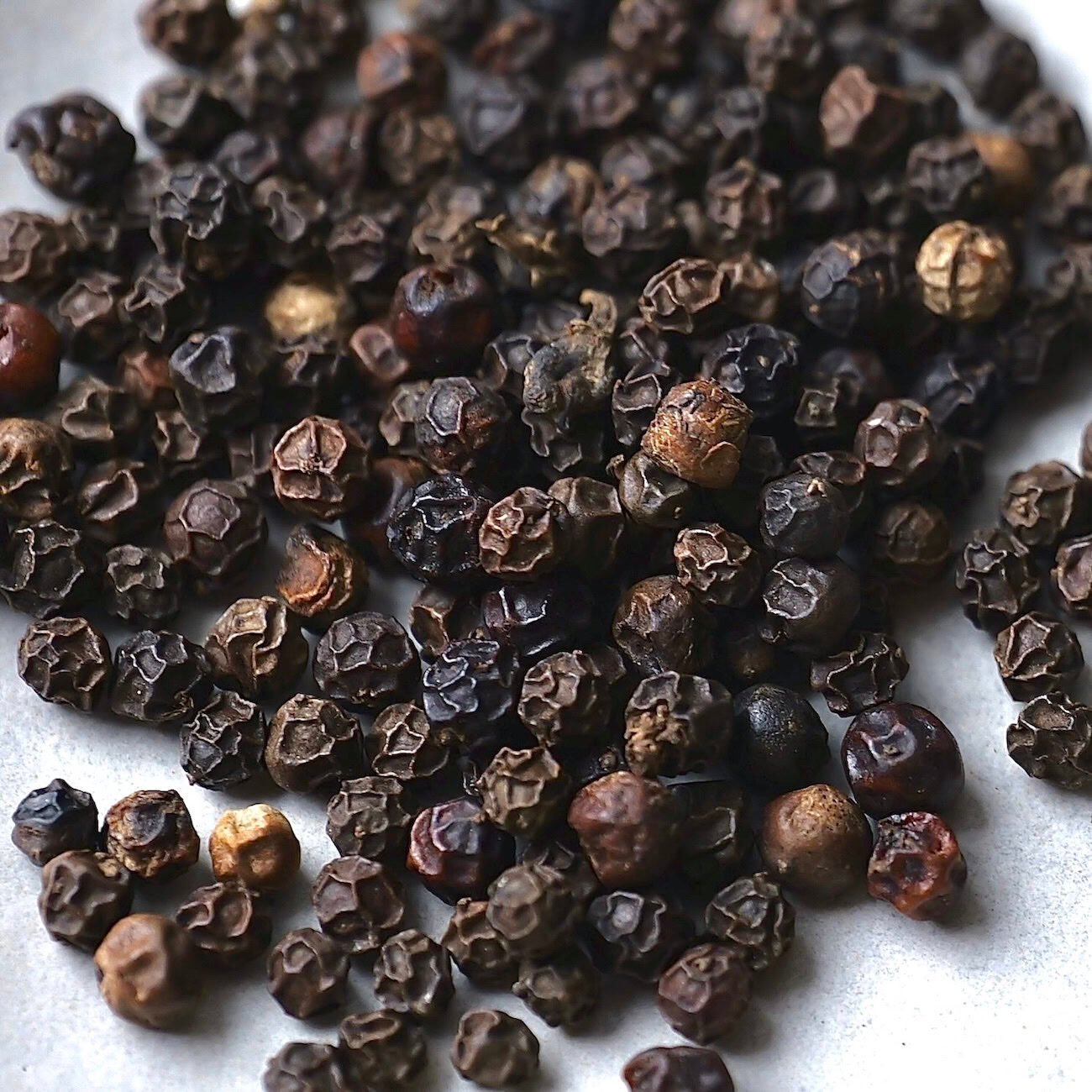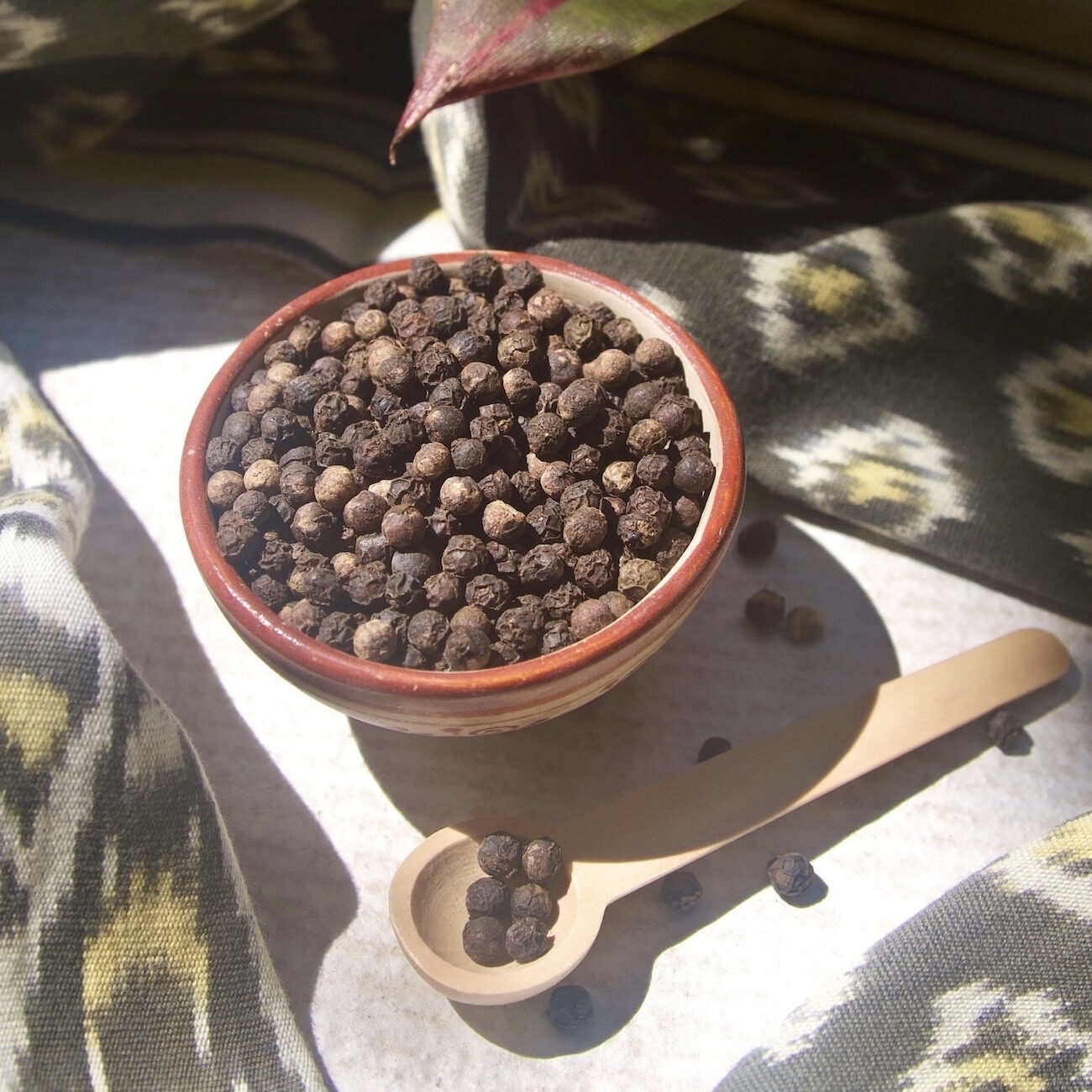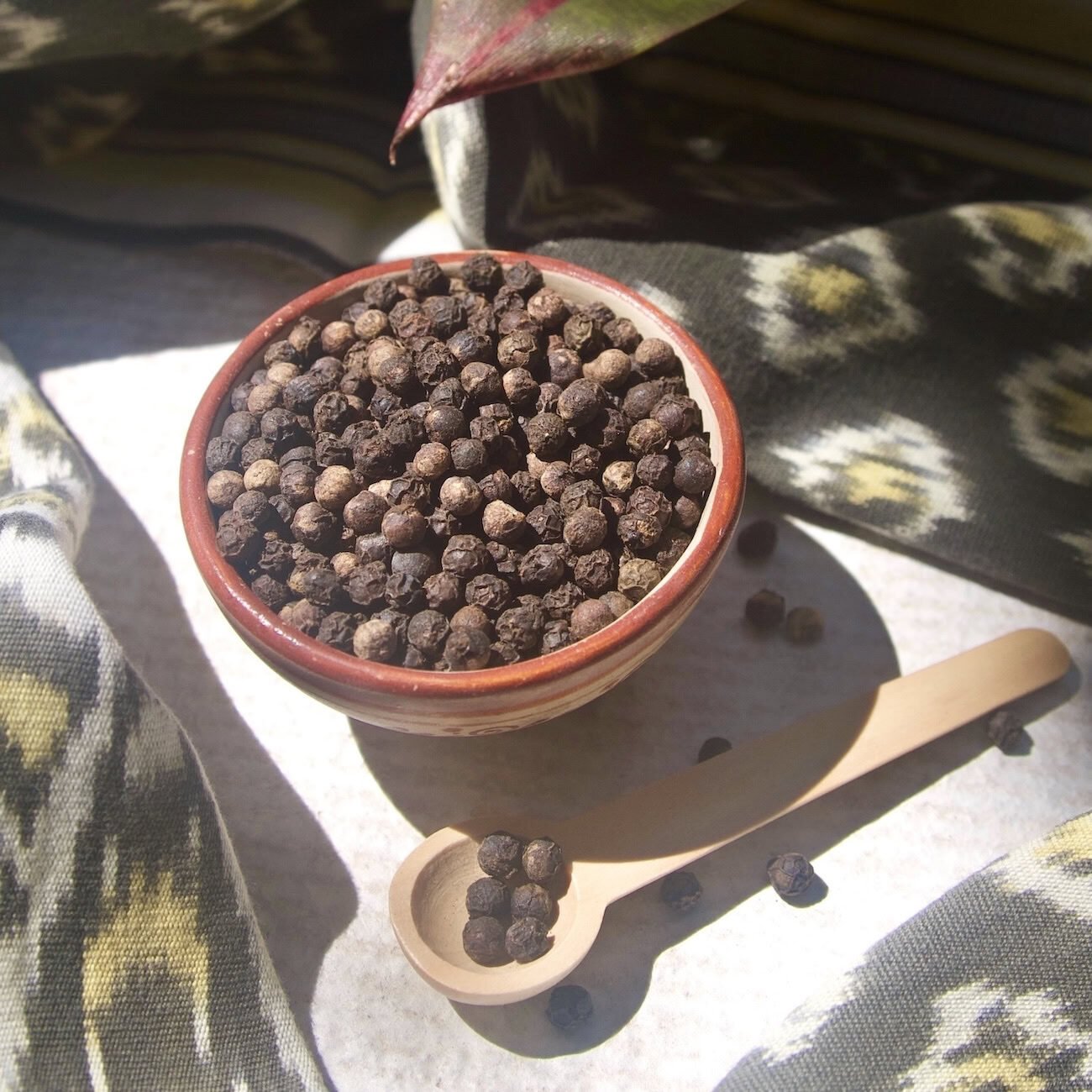Black Pepper
Black pepper is the spice produced from the unripe fruit of Piper nigrum, a tropical flowering vine in the pepper family.

REGION OF ORIGIN
The Malabar Coast of southwestern India. This area is one of the wettest regions of the subcontinent, allowing the tropical pepper vine to flourish for millennia.
PART & COLOR
Although often called "berries", black peppercorns are small, round fruits called drupes. They are harvested unripe and turn dark brown to black when dried. Their color varies depending on the drying process and ripeness—even dark reds and deep purples may emerge.
HARVEST
Piper nigrum is a perennial vine that begins flowering around 3-4 years after planting and continues to produce fruit for several years. The fruits start out green and mature into a vibrant red. They are harvested when they’re still green, which is when they have the highest concentration of piperine. The vines are carefully picked by hand, threshed, and dried for 5-6 days. This drying process causes the fruits to shrink, wrinkle, and darken into their distinctive "peppercorn" appearance. In tropical regions like India and Vietnam, the main harvest season typically occurs between December and February.

FLAVOR & AROMA PROFILE
Most people are unaware that black pepper is a truly exquisite spice because of that pre-ground powder that sits in a shaker next to salt. Since most of the volatile oils have already evaporated, the flavor of “pepper” is flat and one-dimensional. Just a little kick of heat, really.
There’s a reason why waiters freshly grind black peppercorns right in front of you at upscale restaurants. The majority of essential oils dissipate after only a few minutes. You must be present when they are released to take full advantage of the complete spice. Freshly ground peppercorns have depth, their flavors more intense and nuanced. They offer a sharp, robust heat with layered notes of citrus, pine, and fruit. They are fruits, after all, and you can often really smell and taste it.
When freshly ground, the powder isn’t just grey, but speckled with white and black. The white is the inner seed, holding the most concentrated heat, and the black is the wrinkled outer layer, which is fruity and a little floral. They both mix together, perfectly blending sweet and spice.
CULINARY USES
Hailed as the “King of Spices,” black pepper’s unique pungency has made it the most popular spice on earth. In fact, it is the most ubiquitous plant-based ingredient in the world today. So needless to say, its versatility is through the roof—sweet and savory dishes, spice blends, deserts, and beverages all welcome the king.
In savory cuisine, black pepper's fruity heat cuts through rich flavors, and its earthiness complements a wide range of ingredients. Just a few cracks of freshly ground, quality peppercorns elevates a simple steak or transforms a vegetable stir-fry into a flavorful masterpiece.
Black pepper is key to many beloved blends like garam masala and baharat. And while it may seem unexpected in deserts, it can add a surprising twist. Just a pinch enhances the flavors of chocolate in particular. It's also essential to savory cocktails like the Bloody Mary, and it can add intrigue to classic drinks by infusing simple syrup. Black pepper is the universal spice, well-deserving its throne.



